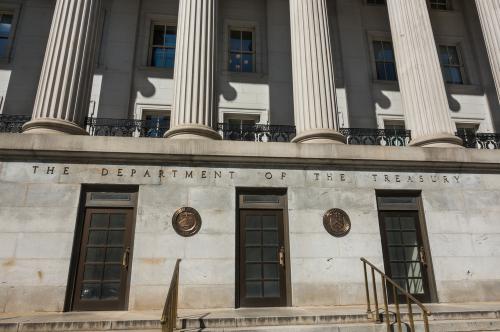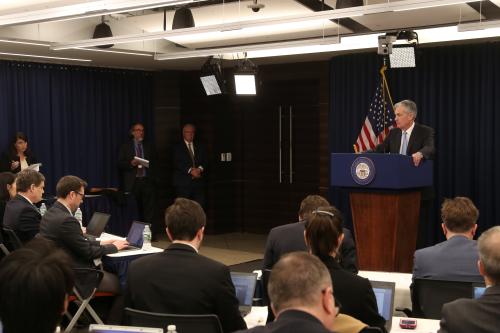As President-elect Obama met with congressional leaders Monday to discuss the economic recovery plan, the U.S. automakers were reporting their worst year in nearly a half century. The incoming administration needs to act quickly to stimulate our ailing economy, prevent the collapse of the auto industry and tackle climate change and oil dependence. One policy idea might simultaneously rev up the engine on all three challenges—cash for clunkers.
Offering cash vouchers to clunker owners in exchange for their old, polluting cars is an idea that should be getting more attention. Drivers could use the vouchers toward the purchase of newer, more fuel-efficient vehicles, with the old vehicles scrapped to get them off the road.
Local variants of the cash for clunkers program are already operating in such states as California and Texas. Overseas, France just announced the adoption of a similar program as part of its stimulus package.
Cash for clunkers can provide timely economic stimulus by giving people money quickly to spend on cars. Each stimulus dollar would also have high bang-for-the-buck because it would be directed toward the purchase of a newer car, and thus less likely to be saved, used to pay down debt or applied in other ways that do not boost consumer spending. Since low-income people are more likely to own older cars, the program is also targeted at those most in need.
With new car sales plunging, the stimulated demand for new cars would pep the auto industry and assembly lines. Even the purchase of a used car would indirectly boost new cars sales because the scrapping of each old vehicle from the U.S. fleet paves the way for more.
Cash for clunkers would also reduce carbon emissions, local pollution and oil consumption. Older cars emit far more local pollution. A California study, for example, found that in 2010, vehicles from model year 1998 or earlier will be responsible for 25 percent of miles driven but 75 percent of local pollution.
Getting the most fuel-inefficient vehicles off the road can also be a particularly effective way to reduce gasoline consumption in the short term. Consider that if two people drive the same number of miles, the one who switches from an SUV that gets 10 miles-per-gallon to one that gets 12 will actually save more gasoline than the person who switches from a sedan that gets 30 miles-per-gallon to a hybrid that gets 50.
What really matters is gallons-per-mile, not the more common measurement of miles-per-gallon. If both drive 300 miles, the SUV driver will use 25 gallons rather than 30, thus saving 5. But the sedan driver will use 6 gallons rather than 10, thus saving only 4. In the long run, we are going to need much more fuel-efficient cars. But targeting the worst offenders provides more benefit than many realize.
The government could offer the owners of vehicles older than 10 years a voucher set according to a sliding scale based on the difference in fuel economy and age between the clunker and its replacement. To be cost effective, rough calculations suggest that the voucher would need to be in the range of $1,500 to $2,500. For stimulus purposes, however, more generous vouchers might be justified even if they exceed the benefits from reduced carbon emissions, pollution and oil dependence.
The program should be temporary, say for two to three years. For one thing, pollution standards have improved, so a 10-year-old car in a few years will not be nearly as polluting as a 10-year-old car is today. Also, the need for fiscal stimulus is only short-term. Finally, a temporary program means people will have less incentive to hold on to old cars longer just to get the voucher.
The cost and benefits of the program would depend on how many drivers participate and on the mix of cars. Assuming the program scrapped five million vehicles (5 percent of the fleet greater than 10 years old) for vouchers that averaged $2,000 each, the total cost of the program would be $10 billion per year—though some of that cost can be offset by the value of the scrap metal. Larger vouchers would induce more participation and achieve greater fiscal stimulus. Assuming the scrapped vehicles averaged 15 miles-per-gallon and were replaced by vehicles averaging 25, the program would save 17.6 million tons of carbon dioxide, 26 thousand tons of nitrous oxide, and two billion gallons of gasoline.
The program would need to be carefully designed to minimize unintended consequences. For example, such a program may induce people to scrap unwanted vehicles that are not driven much, which would have little environmental benefit. A requirement that the vehicle have been registered and insured for a minimum amount of time prior to trade-in might curtail that concern.
Simple-sounding policies that embrace multiple problems simultaneously are hard to find. Just a sliver of the economic recovery plan to pay people to scrap their clunkers might help salvage the economy, the environment and Detroit.
The Brookings Institution is committed to quality, independence, and impact.
We are supported by a diverse array of funders. In line with our values and policies, each Brookings publication represents the sole views of its author(s).



Commentary
Op-edRefuel Economy with Cash for Old Cars
January 6, 2009